Wall decoration in the bathroom: old and new materials
When renovating a bathroom, in order to obtain a good result, it is necessary to choose the right materials and assess the scale of work, the amount of time required. In this article, we will consider various options for decorating a bathroom using traditional and unusual materials.
The content of the article
Wall alignment methods
Almost all bathroom finishing options provide for preliminary wall alignment... There are two ways - using plaster and drywall. Plastering is a longer and more expensive process, but it takes up less space - when plastering, existing irregularities are filled. You can quickly align the walls in the bathroom with drywall and it will cost less. And that's a plus. But at the same time at least 6 cm will "leave" on each wall (5 cm profile + 1.2 cm thickness of GVL). And this is a solid disadvantage, especially in small bathrooms. Another point: you can fix heavy things or equipment on drywall walls only if you pre-install mortgages - a wooden bar or steel strips fixed to the wall. And these are additional costs and difficulties.
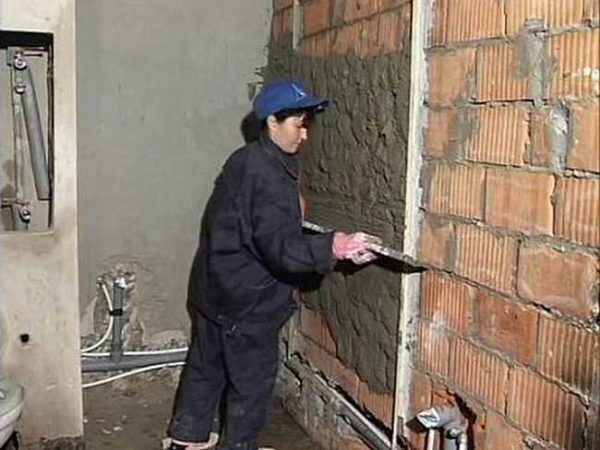
The walls in the bathroom are leveled with plaster installed beacons
Whichever method of aligning the walls and ceiling in the bathroom you choose, you must take into account the high humidity of this room. Therefore, all materials are moisture resistant:
- The plaster is chosen based on cement. You can use gypsum, but which states that it can be used in wet rooms. It would be nice if the composition also contains antibacterial components - against the development of fungus and mold.
- If the option of aligning the walls with gypsum board is chosen, it is taken moisture-resistant, the frame is made of a galvanized profile. When applying putty, special compounds are chosen for rooms with high humidity.
After leveling the walls in any of the ways, surfaces are prepared for finishing. Smoothly plastered walls or primed drywall are enough for laying tiles. Putty is required for wallpapering and applying decorative plaster. The surface must be perfect for painting, because the putty is applied in several layers (usually two are enough, but sometimes more).
There is an option for finishing the bathroom, under which the walls are not leveled - PVC wall panels. They are mounted on the lathing, therefore the degree of curvature of the walls is not important.
Tiles and their types
When it comes to bathroom finishing options, the first thing that comes to mind is ceramic tiles. This material is ideal for wet rooms and has many advantages:
- High moisture resistance. Moreover, if you wipe the seams well, the ceramic tiles will protect the underlying layers from moisture.
- Hygiene. It washes perfectly with any detergent.
- Durability. The decoration of the walls in the bathroom from tiles is changed mainly because you want something more modern, attractive. The ceramics themselves, as a rule, remain in a normal state. The seams look bad, but they can be updated by cleaning out the old composition and refilling with a new one.
- High maintainability. If one or more fragments are damaged, they can be replaced with new ones (therefore, leave a couple of tiles of different types in reserve).
- A wide range of.There are tiles of different sizes - large, medium, small, there are - square, rectangular, multifaceted, there is even a round. All this in different colors - plain or textured, with graphic or floral patterns, glossy or matte.
All this is great, but wall decoration in the bathroom with ceramic tiles also has disadvantages. The first is the considerable cost of finishing material. The second is the laboriousness and complexity of installation, and, therefore, the high cost of services for its installation. If you wish, you can lay the tiles yourself, but even under such conditions this repair cannot be called cheap. The third drawback is rigidity. When the house shrinks due to the lack of elasticity, the tiles can crack. Therefore, in new buildings they are trying to choose other options for finishing the bathroom. In any case, until the main shrinkage processes take place.
The wall decoration in the bathroom with porcelain stoneware and mosaics should be included in the same category. Their wall mounting technology is very similar, as are the properties of materials, but the cost of material and work is even higher.
Painting
Painting is a traditional way of decorating walls in damp rooms, almost forgotten for a while due to the impracticality and unattractiveness of the resulting coating. The paint was only oil, the walls were not very even (to put it mildly), in general it looked poor. New technologies and materials make it possible to achieve a perfectly flat surface, a variety of colors - different effects. All this at low cost. This gradually revives the forgotten option of bathroom decoration - painting the walls.
Preparing the walls
A perfectly flat surface is required for painting and it can be done like this with the help of a moisture-resistant putty. It can be applied to plaster or drywall. Regardless of the base, with sufficient dexterity, the surface becomes truly perfect. Not a single flaw is possible.
The prepared walls or ceiling are primed with a composition with an antibacterial and water-repellent component, after drying, you can start applying paint.
Types of bathroom paints
But not all paints can be used in the bathroom, since not all of them are moisture resistant. The following paints and varnishes are suitable:
- Water-based paints based on latex and acrylates. Acrylic water emulsion is an inexpensive option that normally tolerates high humidity, but you should not use it in the immediate vicinity of a bath, shower and washbasin. Latex emulsion forms a dense waterproof film on the surface and even slightly "tightens" irregularities, if any. How to paint walls with water-based paint, see here.
- Alkyd paints. In appearance they are very similar to oil, but have better characteristics, maybe glossy, semi-gloss, matte. Of the advantages - it has an average vapor permeability and a low price. Disadvantages - emphasizes all irregularities, change color over time - acquire a yellowish tint. Another drawback is that they are made on the basis of organic solvents (white spirit, gasoline, turpentine), because the smell is strong before drying.
- Silicate paints. The main plus is that no fungus or mold will appear on the walls and ceiling painted with this paint. There are also advantages: very high vapor permeability, strong and durable coating. Disadvantage: while the composition is not dry, it is very harmful to humans. As soon as crystallization has occurred, the coating becomes completely harmless, but it is necessary to work in protective clothing and a respirator and leave the house before it dries. Another unpleasant moment: no others “do not fit” on silicate paints. If you want to change the type of paint, you will have to clean everything off.
- Silicone based. This compound is 100% waterproof.It does not conduct water in any form - in the form of steam too. Therefore, when finishing with this type, you will have to do very powerful ventilation.
- Chlorinated rubber. This type of paint is used in pools for painting bowls, so they are even suitable for walls near a bathroom or in a shower stall. But you also have to take care of good ventilation and removal of the coating before the next painting.
As you can see, there are options for finishing the bathroom with paint, and there are many. Most can be used with a limited renovation budget, but chlorinated rubber and silicone are not very cheap.
Decorative plaster
If he talks about new finishing materials for the bathroom, then first of all it is worth remembering about decorative plaster. It can be applied on relatively flat walls or on a plastered surface. Usually they prefer to level the walls first, then apply decorative plaster. It belongs to expensive materials, therefore it is desirable to minimize the consumption.
For finishing the walls of the bathroom, moisture-resistant options are chosen, and these are mainly facade compositions. They do not change color for a long time, they can be washed with a stiff brush and detergent, but they are very rough to the touch. The options for finishing the bathroom with facade plasters are in the photo below.
One of the bathroom finishes is Venetian plaster, covered with two layers of wax. With this combination of materials, water in any form simply rolls off it. In terms of practicality, this option is no worse than paint, but definitely more beautiful. Cons - high price and complexity of application.
Read about the methods of applying decorative plaster here.
Wallpaper in the bathroom
Wallpaper in the bathroom is perceived by many critically. And in vain. This is an inexpensive and quick way to decorate your bathroom walls. It is hardly worth covering the area near the bathroom or washbasin with them, but the rest of the space is very possible. You need to choose wallpaper for the bathroom that is moisture resistant (in graphic coding, these are three wavy lines), preferably resistant to friction - so that you can wash them with a brush.
Use the glue with antibacterial additives, not forgetting to prime the walls with a composition with antiseptics. This option is probably the cheapest bathroom wall finish and the quickest way to tidy it up (assuming the walls are already aligned). And such repairs will last for a couple of years, and then you can re-glue the wallpaper or choose a more durable finish.
How to glue wallpaper read here.
Plastic panels
PVC wall panels are another inexpensive alternative to bathroom tiles. Their charm is that the walls can not be leveled: they are attached to the crate, which will hide all the irregularities. The second advantage is that they are inexpensive and assembled quickly. Another plus is a large number of colors, including plastic panels imitating laid ceramic tiles, mosaics, decorative panels.
Another positive point: under the wall plastic panels, you can easily hide all communications, and they are also easy to clean. But so that mold does not start under the finish, the walls must be primed with an antiseptic compound and ensure good ventilation.
The disadvantages of this method of finishing the bathroom - the crate takes up a fairly solid volume, which is important. And the second minus - the panels are fragile and with considerable effort jumpers are pressed into them. Having struck with your elbow, you cannot pierce through the strips of normal quality, but there will be a dent for sure, and this spoils the appearance.
The installation of plastic panels is described in detail here.
Custom bathroom finishes
Some finishing materials are not very suitable for use in high humidity conditions, but, with certain processing, they can be used there. Such materials include wood and natural and artificial stone.
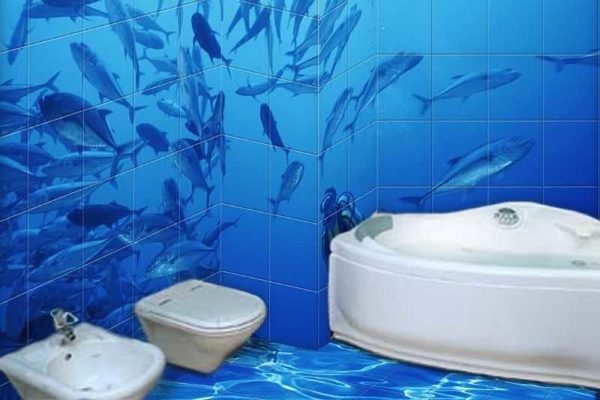
You can customize the bath even using standard materials - photo printing on tiles and Self-leveling floors
There are also new materials for wall decoration that are suitable for the bathroom in terms of their characteristics, but due to the fact that they have been developed recently, they are still little used. Such materials include wall linoleum and thin PVC panels.
We'll talk about all these finishing materials in this section.
Wall linoleum
This material is brand new. It is produced by dripping Tarkett and is called Wallgard. Developed as a wall covering in medical institutions, it is resistant to water and chemicals, and can be washed many times, even with the use of disinfectants. In appearance it resembles a flexible sheet of plastic with a thickness of 1.2 mm, it is sold in rolls 2 m wide, cut with scissors.
So far there are not so many colors - the material is new, but since it has aroused active interest, the assortment will probably be expanded soon. Nowadays, if you prefer calm tones in finishes and matte surfaces, you can use wall linoleum.
The canvases are mounted on flat walls, welded together with a special soldering iron with an adhesive cord. Cold welding (glue) can be used, but the tightness of this connection is much lower.
PVC panels without partitions
There are PVC panels for wall decoration without partitions. These are printed sheets of plastic. Plastic thickness 2-3mm, plate size 955 * 480mm or so. In Russia, they are produced in one campaign so far - the Regul enterprise produces the material "Decopan". One sheet costs 215 rubles, that is, the material belongs to the category of inexpensive.
It is mounted on glue on flat walls, cut with scissors. In general, a promising option for economical wall decoration in the bathroom. Summer residents will surely like it - it creates a 100% water-repellent surface, weighs little, and is easy to install.
Natural and decorative stone
If you are looking for non-standard bathroom finishes, take a look at flagstone - natural stone cut into thin slabs - flagstone. Granite flagstone is most suitable as it is not hygroscopic, but other types can be used. The laid stone is usually covered with varnish on top, which is additional protection from moisture.
Another option is marble. But this is an expensive material that looks only in spacious rooms. It is rarely used for decorating bathrooms, since it reacts poorly to contact with water, and it is difficult to protect it. Very difficult installation - the plates are large, weigh a lot, only professionals can handle it.
When laying natural stone, a special adhesive is used (for natural stone). The technique is similar to laying tiles, only you have to select each element.
Natural stone, of course, is beautiful, but heavy and expensive. The slabs are freeform, which makes installation very difficult. These problems do not exist if you use artificial decorative stone. It is made on the basis of gypsum and cement. Cement is used to decorate the walls in the bathroom, since gypsum is hygroscopic and does not react well to getting wet.
Laying decorative stone on the walls is a little more difficult to work with ceramic tiles. Each collection consists of a set of fragments in the form of small bricks of different shapes. They fit together to create an uneven but picturesque surface. In order not to make mistakes when laying, the fragments are first laid out on the floor, a combination of colors and sizes of elements is selected.When the "picture" satisfies "the decorative stone is transferred to the walls one by one.
There are many options for decorating a bathroom with decorative stone, but most often the stone is present only in fragments. They decorate one wall or even only a part. The rest of the space is most often painted or, as in the photo above, decorated with mosaics. These types of materials combine very well.
Wood
In our country, wood is used very rarely for bathroom decoration - it changes size when the humidity changes, deteriorates faster and loses its appearance. So this is not the best option, although it undoubtedly looks beautiful.
Impregnations help to improve the situation, which preserve the attractive appearance of wood even outdoors. These are formulations based on oils and wax. Many of them give wood color at the same time as protection. It can be whitened, made darker, even painted in blue, pink or other colors - there are different colors.
Such bathroom finishes look cozy and warm, and not cold, as when using tiles. The disadvantage of this type of finish is that regular wood care is required using special tools.

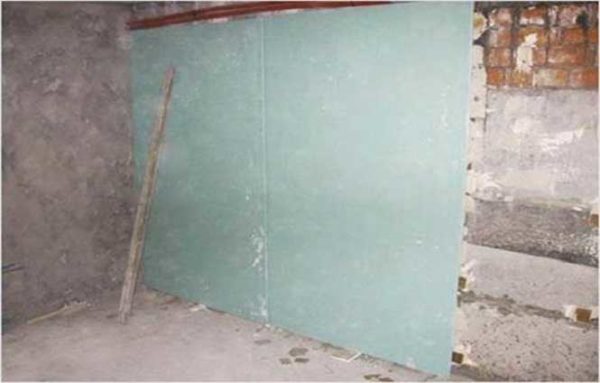
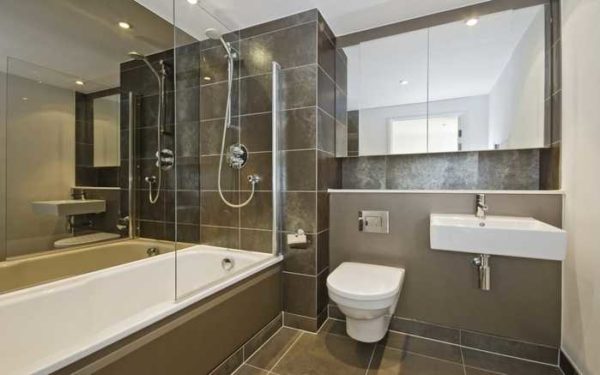
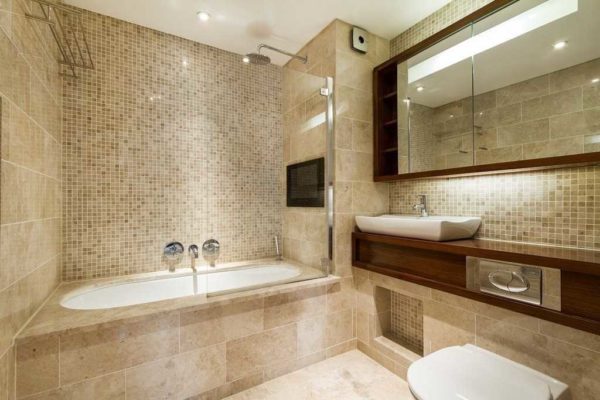
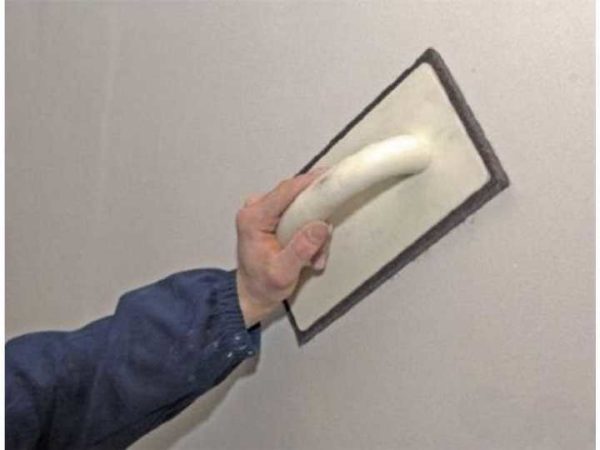
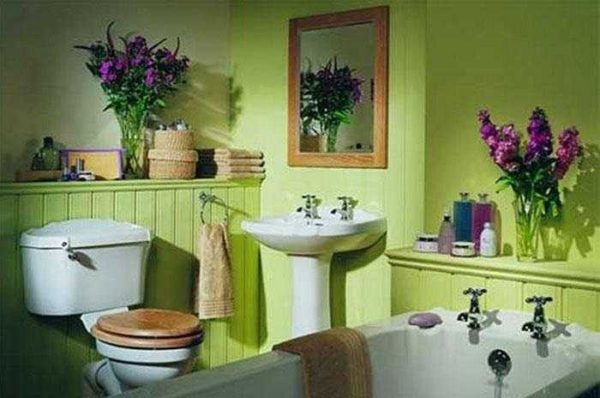
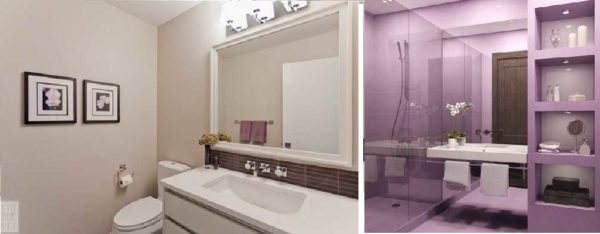
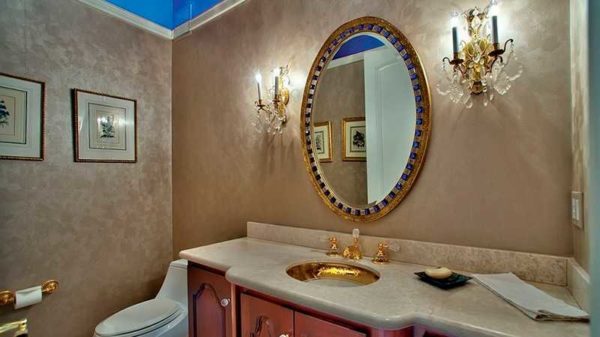
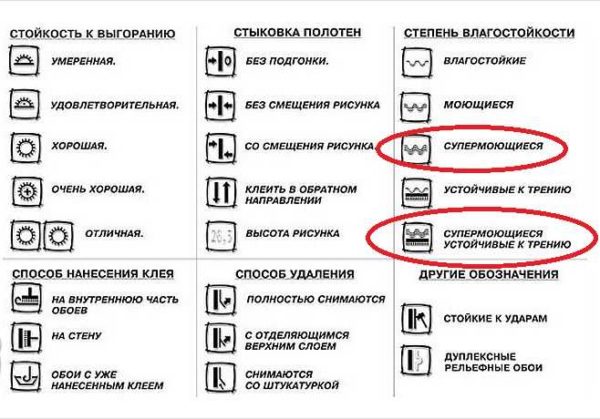
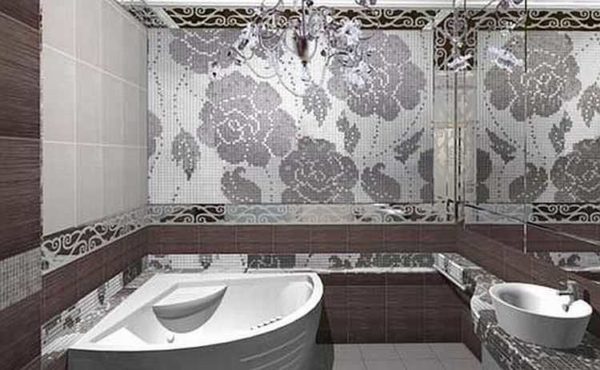
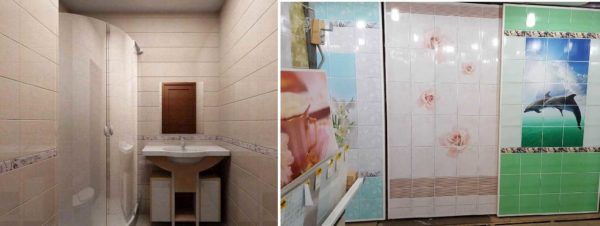
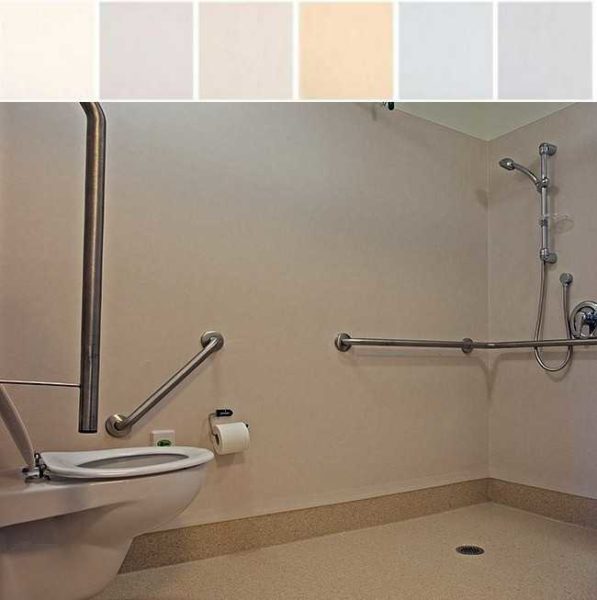
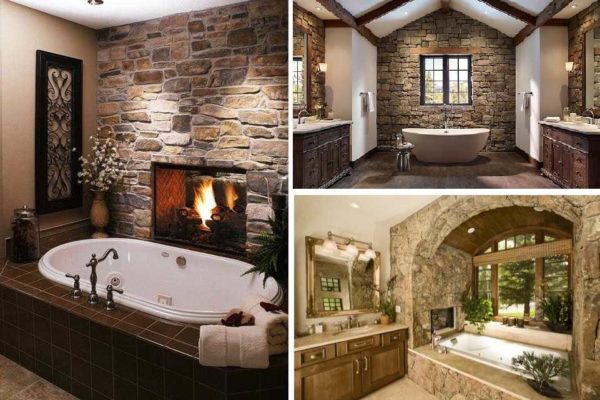
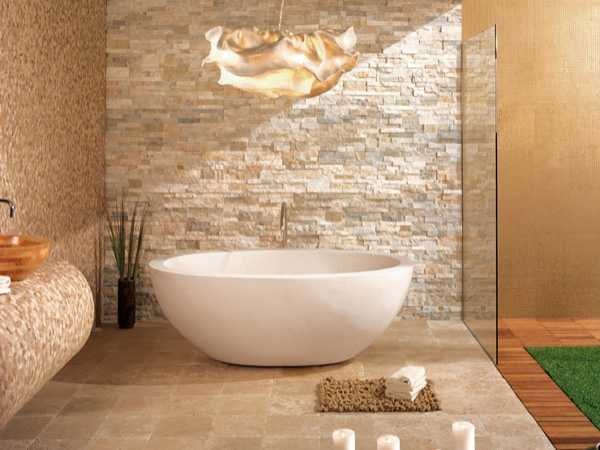

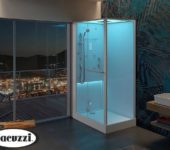
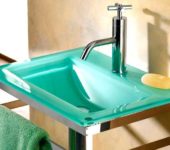
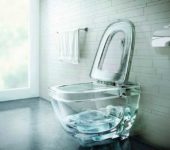
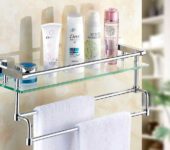
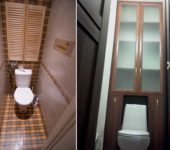





Great stuff, thanks!
We try))